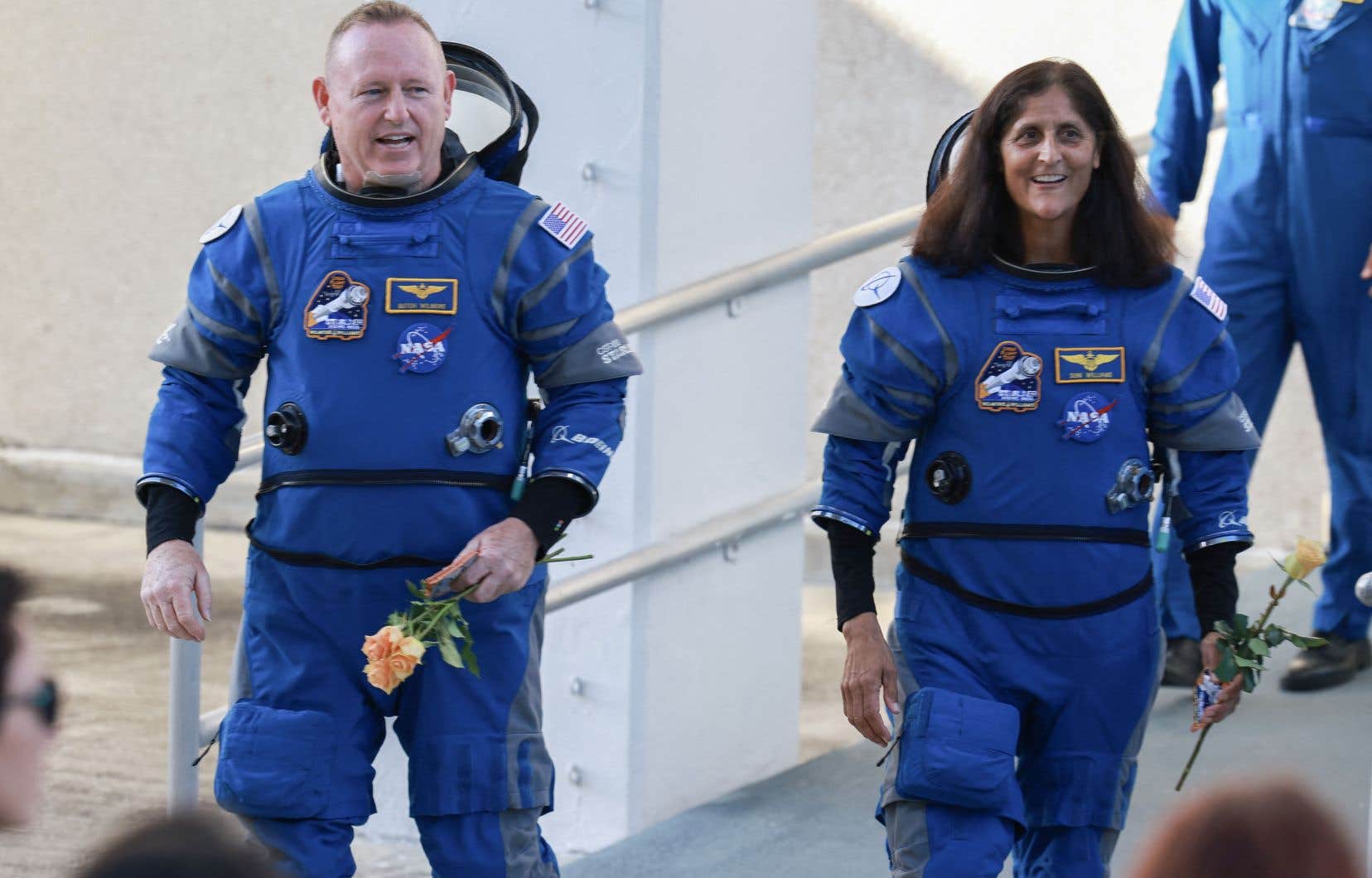The ship Starliner of Boeing, which is carrying two astronauts for the first time, docked with the International Space Station on Thursday, a crucial step taken despite problems encountered with the capsule’s propulsion system shortly before the maneuver.
This mission, awaited for years, represents a major challenge for the aeronautical giant and NASA.
Ten years ago, the American space agency ordered two new vehicles from American companies Boeing and SpaceX to transport its astronauts to the Space Station (ISS). If SpaceX has already been playing this role of space taxi for four years, Boeing’s program is years behind schedule.
This first crewed mission for Starliner aims to demonstrate that the vehicle is safe to begin regular operations.
After taking off from Florida the day before, the spacecraft slowly approached the ISS on Thursday, which is 400 km above the Earth and traveling at around 28,000 km/h.
Docking took place at 5:34 p.m. GMT, approximately one hour and twenty minutes later than initially planned.
Problems with some of the ship’s thrusters, used to make small trajectory adjustments, delayed the final approach.
As many as five of these small thrusters, out of 28 in total, failed at one point, a commentator explained during NASA’s live broadcast. But four were eventually put back into operation, providing the number needed for the operation.
The ship’s hatch will soon be opened, allowing astronauts Butch Wilmore, 61, and Suni Williams, 58, to enter the interior of the ISS. They will be greeted there by seven people already on board the flying laboratory.
A press conference with NASA and Boeing officials is planned for the afternoon.
Leaks
The two astronauts must spend a little over a week in the ISS, before returning to Earth still on board Starliner.
During the night from Wednesday to Thursday, NASA announced that two new helium leaks, in addition to one previously known, had been detected in flight on the spacecraft.
These leaks do not represent “a danger to the safety of the crew and the vessel, or to the mission,” said Jim May, a Boeing manager, in a message relayed Thursday morning by the aerospace giant.
One of the leaks, located on one of the ship’s thrusters, was identified before takeoff. It was then decided not to repair it, because after analysis NASA had described it as “small” and considered that it did not represent a danger.
Helium is not a flammable gas, but it is used in the ship’s propulsion system.
It was not immediately clear whether these leaks were linked to the propellant problem encountered just before docking.
Manual piloting
The empty spacecraft had already reached the ISS once in 2022, but this is the first time it has carried astronauts.
Butch Wilmore and Suni Williams have each been to the ISS twice in the past and have been training for several years for this mission.
A few hours after takeoff, they temporarily piloted the spacecraft manually to test its proper functioning.
“The precision is truly incredible,” Butch Wilmore said in a recording relayed by Boeing on Wednesday. “Even more than in the simulator. »
“The first six hours were absolutely fascinating and beyond our expectations,” he added. “It’s just an amazing ship. »
The development program of Starliner was marred by multiple disappointments leading to successive postponements.
Boeing was thus beaten by SpaceX, which has already been transporting astronauts to the ISS since 2020.
But NASA wants to have a second means of transport in order to better be able to deal with possible problems on one of the capsules or an emergency situation.
